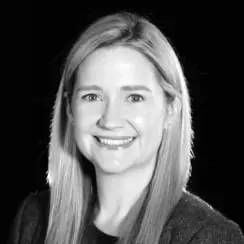 | 1.5 LU |
 | 1.5 LU |
Call to Action:
Abstract: Community Unit School District #200 teamed with Legat Architects and Educational Environments to reinterpret their school libraries as a center for activated learning in two of their elementary schools. The data-driven process resulted in the development of library playbooks, a standardized kit-of-parts, and community engagement standards. The process of the libraries included research tied to curriculum and pedagogy by maximizing flexibility, transparency, wayfinding, and natural light integration. Students, teachers, administrators, and the community were engaged throughout the process for both quantitative and qualitative results. The library research expands to include pre- and post- occupancy surveys, use surveys, and furniture testing. The research led the design to integrate spaces for the nine types of intelligence, tactile learners, and introverted space so that all types of learners could feel safe and comfortable, therefore being placed in a mindset ready to learn. Even the furniture selected would specifically engage in student advancement and research. With all this research and standardization in the development of two libraries in the same district, post-occupancy studies were conducted to best understand the advancements' ROI. Having two schools being used as test fits led post-occupancy outcomes to question; How can environments best be standardized for environmental equity in a district, but also allow for situational latitude? How can development standards give a district-wide feel, but also be highly adaptable depending on the environment selected to be renovated? The results found make the research and approaches scalable and obtainable for a variety of district administrators, educators, researchers, and designers. A digital playbook, which will be provided to attendees, was developed to denote research methodologies from these projects.
Learning Objectives:

Kelsey is an Educational Planner and Architect who is experienced as an educational design professional with an emphasis on education and wellness. Her visions for the future of architecture involve strongly embedded ideologies on designing for equity in the built environment. Her nationally awarded research explores how health and wellness can be implemented to cause positive change within communities that face multifaceted issues like obesity, food deserts, poverty, educational obtainment, and systemic racism. She is a recipient of the EdMarket NexGen Award, she utilizes her passion to design stimulating, future-focused learning environments for Legat Architects.

Dr. O’Keeffe is a dedicated Assistant Superintendent for Business Operations at Community Unit School District 200 outside of Chicago, Illinois. Before his years at CUSD200, he worked for seven years as the Assistant Superintendent of Finance at Arbor Park District 145. Prior to District 145, Dr. O’Keeffe worked in the private sector for major retailers in management and human resources. Dr. O’Keeffe has a strong educational background receiving a B.S. in Business Administration from Elmhurst College; an MHRM from the Keller Graduate School of Management; an M.S. in Educational Administration from Northern Illinois University; and an Ed.D. in Educational Leadership from Western Illinois University.

Arden is a Senior Account Manager at Educational Environments and an experienced speaker who has vast knowledge on the positive cognitive functions of student movement. Her research background includes a strong understanding of the impacts and implementation of Active Design Principles and Strategies. Daily she assists schools with creating mentally and physically healthy learning environments through child autonomy and agency via furniture solutions. She has degrees in Finance and Interior Design and has the ECLPS Certification.
Assessment of the School Facility
The ability to objectively evaluate a learning environment post-occupancy and utilize that data to improve future projects. Implements a plan for educational commissioning that provides guidance on how to use and maximize the learning environment to meet the foundational vision established in the planning phase.